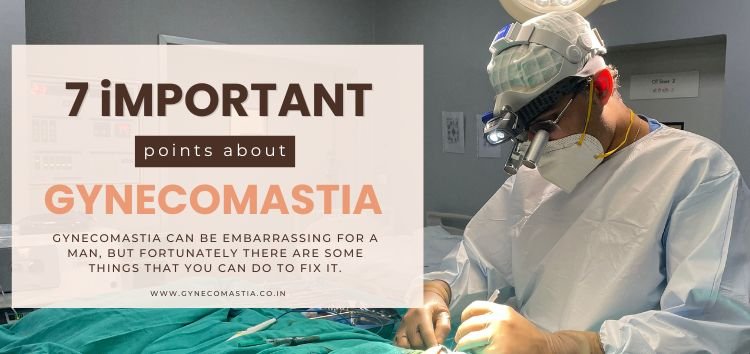Gynecomastia can be embarrassing for a man, but fortunately there are some things that you can do to fix it.
Gynecomastia, also known as man boobs, is the enlargement of the breast tissue in males. There are various treatments for this condition.
- Men who have gynecomastia usually suffer from body dysmorphic disorder.
- Gynecomastia can be caused by a build-up of fatty tissue in the chest area or another form of hormonal imbalance in the body.
- Medication is one way to treat gynecomastia but there are other ways to get rid of it besides taking medicines, such as surgery and liposuction among others.
- It’s not a form of cancer.
- It is a glandular disorder in which male breast tissue grows excessively.
- The breasts may swell up due to the presence of excess breast tissue and or fluid around the area.
- The cause is often hormonal changes which disrupt the balance in the body’s estrogen and testosterone levels, or many drugs including alcohol and marijuana that lead to an increase in estrogen levels in males for example, or chronic kidney disease where both hormones are out of balance.
Different Types Of Gynecomastia
There are three different types of gynecomastia, which are classified by the breast tissue that is present in the breast. The three types are also classified by when they develop in a person’s life.
The three types are
- Juvenile gynecomastia,
- Adult onset gynecomastia, and
- Aenile gynecomastia.
About 1 to 2% of males get juvenile or early onset gynecomastia. This type develops during puberty and usually goes away within two years after puberty ends. When it does not go away, it turns into adult onset gynecomastia.
Adult-onset gynecomastia affects about 6% of all males and can happen at any age, but is more common between forty to fifty years old.
Some men experience gynecomastia that is related to age. These are most commonly seen in elderly men.
The causes of senile gynecomastia are not well understood, but it is believed that the increased estrogen due to increased adipose tissue may play a role. It seems to be more common in overweight individuals, and some have theorized that the accumulation of fat cells could cause the decreased testosterone levels that lead to this condition.
Common causes of gynecomastia
The condition of gynecomastia occurs when the mammary glands take on a glandular and fatty tissue. It can happen to males because of hormonal changes, such as puberty or hormone replacement therapy, or as a result of genetics.
Commonly caused by:
- Genetic factors (start at puberty) may be associated with this condition.
- Hormonal changes (such as during puberty) and drug use may be associated with this condition.
- Gynecomastia is often caused by taking anabolic steroids or other drugs that have side effects on the breasts.
Around six million males suffer from this condition around the world, with between one and two percent of that number experiencing severe gynecomastia. Gynecomastia can also occur in children, it usually resolves on its own within one year.
Gynecomastia Treatment Options
A doctor can provide medical treatment in order to reduce the size and improve the appearance of gynecomastia. Medications and ointments for topical use are also available.
The treatment options for gynecomastia include:
- Medications,
- Surgery, and
- Liposuction.
The treatment option chosen should be determined by the severity of the gynecomastia and its impact on your life (it may not need to be treated if it does not affect you).
For example, if your gynecomastia is not painful or noticeable under clothing but you would still like to get rid of it because it bothers you, then surgery could be an appropriate solution.
In cases of severe gynecomastia, where the breast tissue is hard/firm or has “spilled out” from under the nipples, a doctor may recommend surgical interventions such as liposuction or mammoplasty.

